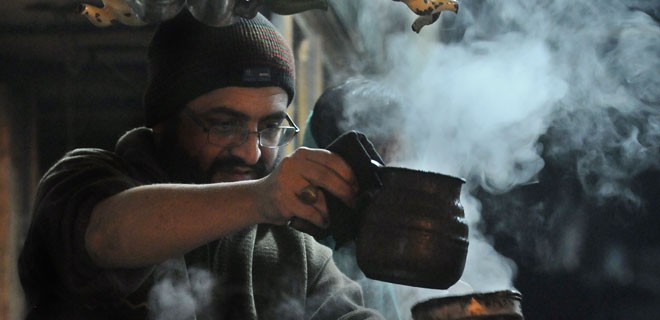

Lahore is known as a foodie’s haven. Indeed, the ‘taste of Lahore’ is just as unique as its sights. Here, winters can be harsh and foggy but the city’s street delights come to our rescue.
The most common and oldest one of these delights is a cob of corn. These are usually heated in a heap of hot ground coal and sold with a splashing of ‘chaat masala’ and lime juice. They are found almost everywhere in Lahore. Vendors frequently visit schools, housing societies and other public places to sell this corn. The trick is to dig the small hill of corn buried in coal and pick the softest one out. The price usually varies with the size of the cob. This snack is healthy, tasty and energising at the same time.
There is another kind of corn sold as a snack. It is removed from the cob and cooked in sand on a gas stove. This is often a mixture of black peas and corn. In winters, there is the addition of peanuts mixed with it. The peanuts are also heated or dry-roasted.
There is a new kind of snack I have recently noticed being sold near Kotha Pind in Model Town. It is peanuts alone, being sold by vendors. These are heated with red chillies and salt in sand. They taste rather spicy and are a little more expensive than corn. They taste delicious. But one has to be careful: once you start eating, it is hard to stop.
Lahore’s winters are incomplete without ‘shakar kandi’ or sweet potato stalls. The sweet potatoes are heated on coal, peeled and cubed. It is then served with chaat masala, lime juice, sometimes even dahi or chatni. Toothpicks serve as spoons and newspaper cuttings as plates.
Sweet potato is available in the city usually between November and February. It is very nutritious, starchy and full of minerals and vitamins.
Everyone has heard the wintry chant, "Garam aandey!" The vendors of this snack are usually children who boil the eggs at home and put them in a cooler or basket and sell them in markets. The egg prices have recently been decreased, so this should be exciting. You get a full boiled egg that has been peeled, cut in the centre with black pepper or salt sprinkled on it.
Soup is also sold on stalls around Lahore in winters. The one I had in Link Road Model Town was modelled after a desi version of Hot ‘n’ Sour soup, with an excess of black pepper. Usually, the one sold on these stalls is ‘yakhni’ (chicken stalk) made from chicken bones, with chunks of boiled chicken, vegetables and black pepper.
Laddu Peethi is found in summers as well but their taste improves in winters. The laddu is made of lentils and served with radish, tamarind sauce, green chilli and chaat masala. It seems like Lahore’s streets would be tasteless without this ample doze of chaat masala on everything. Sometimes curd, mint leaves, onions and tomatoes follow. It is usually sold by vendors but some places like the Main Market in Gulberg have stalls as well.
The Laddu Peethi I usually eat is offered by the vendor outside my residence but the best one I ever ate was the one in Canal Park. One has to be careful that the laddu is fresh and warm. The contrast between the warm laddu and the cold chatni is imperative to perfect the experience. One has to pick the vendors carefully because unlike the rest of the wintry delights, this one has uncooked side dishes. One is at risk of catching some infections, including Hepatitis, if the vegetables and curd are not clean enough.
My father recommends the chicken pieces that are sold in Islampura. These are dipped in their own spicy broth to keep one warm during winters. Unfortunately, I couldn’t make it this week, but this new street snack is on my mind ever since. The project "Islampura Chicken Pieces" will begin soon.